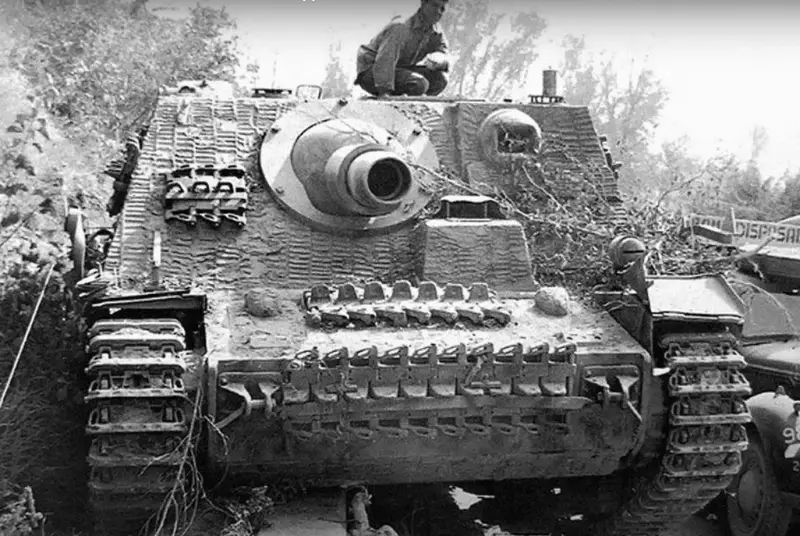German “grizzly”: what the Wehrmacht Sturmpanzer IV assault self-propelled gun was

Sturmpanzer IV is a medium-weight assault self-propelled artillery unit used by Wehrmacht troops during the Second World War. The gun was named “Brummbär”, which means “grizzly” in German. In turn, in the Soviet army these vehicles were simply called “bear”.
The Sturmpanzer IV chassis came from a German medium tank Panzer IV.
The armor of the vehicle is as follows: the lower frontal armor was 80 mm, the main armor was 50 mm plus a 30 mm bolted shield, the sides were 30 mm. In turn, the deckhouse: forehead - 100 mm at an angle of 50 degrees, side slopes - 60 mm, sides - 50 mm, stern - 30 mm and roof - 20 mm.
In addition, 5 mm side screens were installed on the sides of the grizzly.
In fact, in terms of protection, the Sturmpanzer IV was not inferior to the most powerful Tiger tank in the spring of 1943. Although the “grizzly” was not a tank.
Almost in the center of the wheelhouse, with a slight shift to the right, the main 150-mm Stu.H 43 L/12 gun with 38 rounds of ammunition was located. At the same time, such a powerful weapon of the “bear” had a significant drawback. Due to the very short barrel (12 calibers), aimed fire was limited to a range of 450-500 meters. In addition, reloading the Brummbär gun took quite a long time, which forced the vehicle’s crew to “roll back” to cover after firing.
But the range of destruction with a mounted projectile flight path reached 4,3 km. In addition, the high explosive content in the shells provided simply monstrous armor protection.
The weight of the German howitzer was 28,2 tons, while it could reach speeds of up to 40 km/h and had a range of up to 210 km.
The crew of the Wehrmacht assault self-propelled gun consisted of 5 people.
In total, from 1943 to the end of the war, Deutsche Eisenwerke produced 302 of these machines.
Information